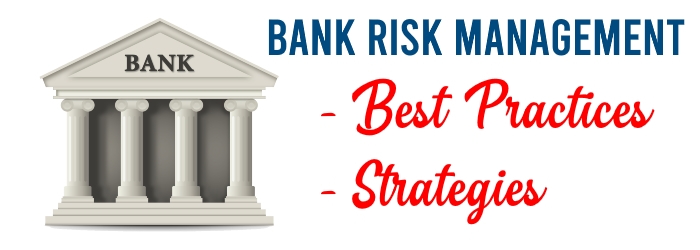Managing Risk in Banking: Best Practices and Strategies
Risk management is a critical function within the banking industry, as banks are exposed to various risks that can have severe consequences on their financial stability. In order to safeguard their operations and protect the interests of stakeholders, banks must implement robust risk management practices and strategies. This article aims to explore the best practices and strategies that banks can adopt to effectively manage risk, ensuring their long-term viability in a constantly evolving financial landscape.

Table of Contents
- 1 Effective Approaches and Strategies for Risk Management in Banking
- 1.1 Risk Identification and Assessment
- 1.2 Risk Governance and Culture
- 1.3 Diversification and Risk Hedging
- 1.4 Stress Testing and Scenario Analysis
- 1.5 Robust Internal Controls and Compliance
- 1.6 Continuous Monitoring and Risk Reporting
- 1.7 Risk Management Technology and Automation
- 1.8 Cybersecurity and Information Security
- 1.9 Collaboration and Industry Partnerships
- 1.10 Regulatory Compliance and Risk Governance
- 1.11 Crisis and Incident Management
- 1.12 Continuous Learning and Adaptability
- 2 Conclusion
Effective Approaches and Strategies for Risk Management in Banking
Risk Identification and Assessment
The first step in managing risk in banking is to identify and assess the potential risks that a bank may face. This involves conducting comprehensive risk assessments across various areas, including credit risk, market risk, liquidity risk, operational risk, and compliance risk. By identifying and understanding these risks, banks can develop appropriate mitigation strategies and allocate resources accordingly. Regular risk assessments enable banks to stay proactive in managing potential threats and adapt to changing market conditions.
Risk Governance and Culture
Establishing a strong risk governance framework and fostering a risk-aware culture are crucial for effective risk management in banking. Banks should have clear risk management policies and procedures in place, supported by a dedicated risk management committee and a well-defined organizational structure. The board of directors should actively oversee risk management practices and ensure that risk management is integrated into the bank’s overall strategy.
Additionally, promoting a culture that values risk awareness and encourages open communication about risks enables employees at all levels to actively contribute to risk mitigation efforts.
Diversification and Risk Hedging
Banks can mitigate risk by diversifying their portfolios and implementing risk hedging strategies. Diversification involves spreading credit exposures across different sectors, geographies, and borrower types, reducing the concentration of risk. By maintaining a well-diversified portfolio, banks can mitigate the impact of a potential default or downturn in any particular sector.
Furthermore, risk hedging techniques, such as using derivatives to offset market risk exposures, can provide an additional layer of protection against adverse market movements.
Stress Testing and Scenario Analysis
Stress testing and scenario analysis are valuable tools for assessing a bank’s resilience to adverse events. By subjecting the bank’s portfolio and financials to various hypothetical stress scenarios, banks can evaluate their ability to withstand severe economic downturns or systemic shocks. These exercises help identify vulnerabilities, quantify potential losses, and inform decision-making regarding capital adequacy and risk appetite. Regular stress testing ensures that banks are well-prepared for unexpected events and enables them to take pre-emptive measures to mitigate risks.
Robust Internal Controls and Compliance
Maintaining robust internal controls and compliance frameworks is essential to manage operational and compliance risks effectively. Banks should implement strong internal control systems that include segregation of duties, regular audits, and effective monitoring of key processes. Compliance with regulatory requirements and industry standards is crucial to avoid penalties and reputational damage.
Banks must stay updated with evolving regulatory frameworks and proactively adapt their processes to ensure compliance, including anti-money laundering (AML) and know-your-customer (KYC) regulations.
Continuous Monitoring and Risk Reporting
Continuous monitoring of risks and timely risk reporting are essential for effective risk management. Banks should implement sophisticated risk monitoring systems that capture real-time data, enabling them to identify emerging risks promptly. Regular risk reporting to management and the board of directors provides transparency and facilitates informed decision-making. Additionally, risk dashboards and key risk indicators (KRIs) can provide early warnings of potential risk breaches, allowing banks to take preventive actions swiftly.
Risk Management Technology and Automation
In today’s digital era, banks can leverage technology and automation to enhance their risk management capabilities. Advanced risk management systems and software can streamline processes, improve data collection and analysis, and enhance risk modeling and forecasting. These tools enable banks to identify and monitor risks in real-time, automate compliance checks, and generate comprehensive risk reports.
Additionally, artificial intelligence (AI) and machine learning (ML) algorithms can analyze vast amounts of data to detect patterns and anomalies, providing valuable insights for risk management decision-making.
Cybersecurity and Information Security
With the increasing reliance on technology, cybersecurity and information security have become critical aspects of risk management in banking. Banks must safeguard customer data, transactional information, and sensitive financial data from cyber threats and data breaches. Implementing robust cybersecurity measures, such as firewalls, encryption, multi-factor authentication, and regular security audits, is essential to protect against unauthorized access and data breaches.
Banks should also educate their employees about cybersecurity best practices and establish incident response plans to effectively manage and mitigate cyber risks.
Collaboration and Industry Partnerships
Risk management in banking can be further strengthened through collaboration and partnerships within the industry. Participating in industry forums, sharing best practices, and collaborating on risk management initiatives enable banks to learn from each other and stay updated on emerging risks and trends. Banks can also form strategic partnerships with technology providers, cybersecurity firms, and risk management consultants to access specialized expertise and leverage innovative solutions.
Collaborative efforts facilitate a holistic approach to risk management and enhance the industry’s overall resilience.
Regulatory Compliance and Risk Governance
Compliance with regulatory requirements is a fundamental aspect of risk management in banking. Banks must stay abreast of evolving regulations, such as Basel III, Dodd-Frank Act, and General Data Protection Regulation (GDPR), and ensure their risk management practices align with these standards. Establishing a robust risk governance framework, which includes a clear delineation of roles and responsibilities, regular reporting to regulators, and internal audit processes, helps banks demonstrate compliance and foster a culture of accountability.
Crisis and Incident Management
Preparing for and effectively managing crises and incidents is an integral part of risk management. Banks should develop comprehensive crisis management plans that outline protocols for handling various types of emergencies, such as financial crises, natural disasters, or reputational issues. These plans should include communication strategies, escalation procedures, and coordination with relevant stakeholders, including regulatory authorities.
Regularly testing and updating these plans ensures banks can respond swiftly and effectively in times of crisis, minimizing the impact on operations and reputation.
Continuous Learning and Adaptability
Risk management in banking is an ongoing process that requires continuous learning and adaptability. Banks should invest in training programs and professional development opportunities for their employees to enhance their risk management skills and knowledge. Staying updated on industry trends, emerging risks, and regulatory changes through continuous learning enables banks to proactively adjust their risk management strategies. Moreover, fostering a culture of innovation and adaptability allows banks to respond to evolving risks and market dynamics effectively.
Conclusion
Effective risk management is essential for the long-term viability and stability of banks. By adopting best practices such as risk identification and assessment, strong risk governance, diversification, stress testing, and continuous monitoring, banks can proactively manage various risks. Leveraging technology and automation, ensuring cybersecurity, fostering collaboration, complying with regulations, and being prepared for crises further enhance risk management capabilities.
By embracing these strategies and cultivating a culture of continuous learning and adaptability, banks can navigate the complex risk landscape and thrive in the evolving banking industry.

